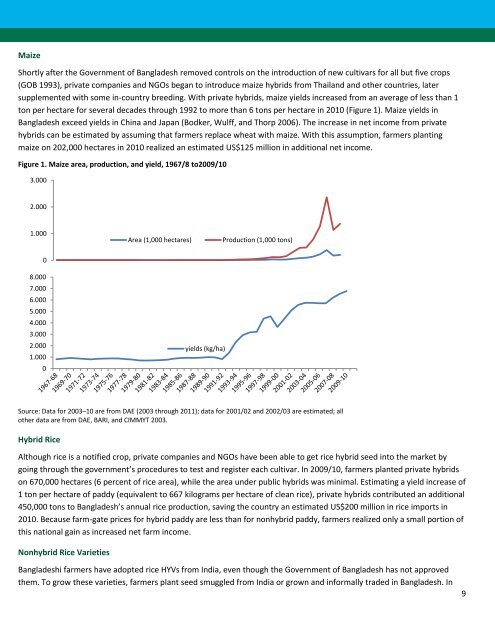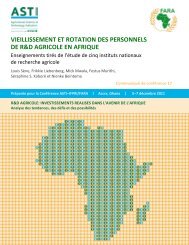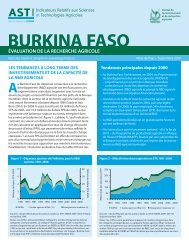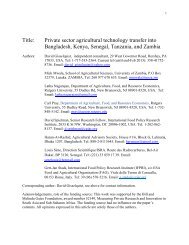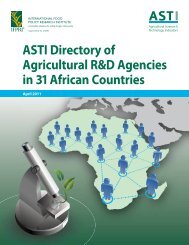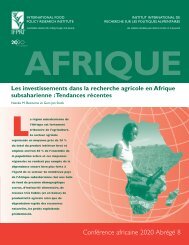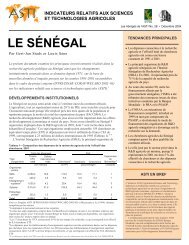Bangladesh country report - ASTI - cgiar
Bangladesh country report - ASTI - cgiar
Bangladesh country report - ASTI - cgiar
You also want an ePaper? Increase the reach of your titles
YUMPU automatically turns print PDFs into web optimized ePapers that Google loves.
Maize<br />
Shortly after the Government of <strong>Bangladesh</strong> removed controls on the introduction of new cultivars for all but five crops<br />
(GOB 1993), private companies and NGOs began to introduce maize hybrids from Thailand and other countries, later<br />
supplemented with some in-<strong>country</strong> breeding. With private hybrids, maize yields increased from an average of less than 1<br />
ton per hectare for several decades through 1992 to more than 6 tons per hectare in 2010 (Figure 1). Maize yields in<br />
<strong>Bangladesh</strong> exceed yields in China and Japan (Bodker, Wulff, and Thorp 2006). The increase in net income from private<br />
hybrids can be estimated by assuming that farmers replace wheat with maize. With this assumption, farmers planting<br />
maize on 202,000 hectares in 2010 realized an estimated US$125 million in additional net income.<br />
Figure 1. Maize area, production, and yield, 1967/8 to2009/10<br />
3.000<br />
2.000<br />
1.000<br />
Area (1,000 hectares)<br />
Production (1,000 tons)<br />
0<br />
8.000<br />
7.000<br />
6.000<br />
5.000<br />
4.000<br />
3.000<br />
2.000<br />
1.000<br />
0<br />
yields (kg/ha)<br />
Source: Data for 2003–10 are from DAE (2003 through 2011); data for 2001/02 and 2002/03 are estimated; all<br />
other data are from DAE, BARI, and CIMMYT 2003.<br />
Hybrid Rice<br />
Although rice is a notified crop, private companies and NGOs have been able to get rice hybrid seed into the market by<br />
going through the government’s procedures to test and register each cultivar. In 2009/10, farmers planted private hybrids<br />
on 670,000 hectares (6 percent of rice area), while the area under public hybrids was minimal. Estimating a yield increase of<br />
1 ton per hectare of paddy (equivalent to 667 kilograms per hectare of clean rice), private hybrids contributed an additional<br />
450,000 tons to <strong>Bangladesh</strong>’s annual rice production, saving the <strong>country</strong> an estimated US$200 million in rice imports in<br />
2010. Because farm-gate prices for hybrid paddy are less than for nonhybrid paddy, farmers realized only a small portion of<br />
this national gain as increased net farm income.<br />
Nonhybrid Rice Varieties<br />
<strong>Bangladesh</strong>i farmers have adopted rice HYVs from India, even though the Government of <strong>Bangladesh</strong> has not approved<br />
them. To grow these varieties, farmers plant seed smuggled from India or grown and informally traded in <strong>Bangladesh</strong>. In<br />
9


